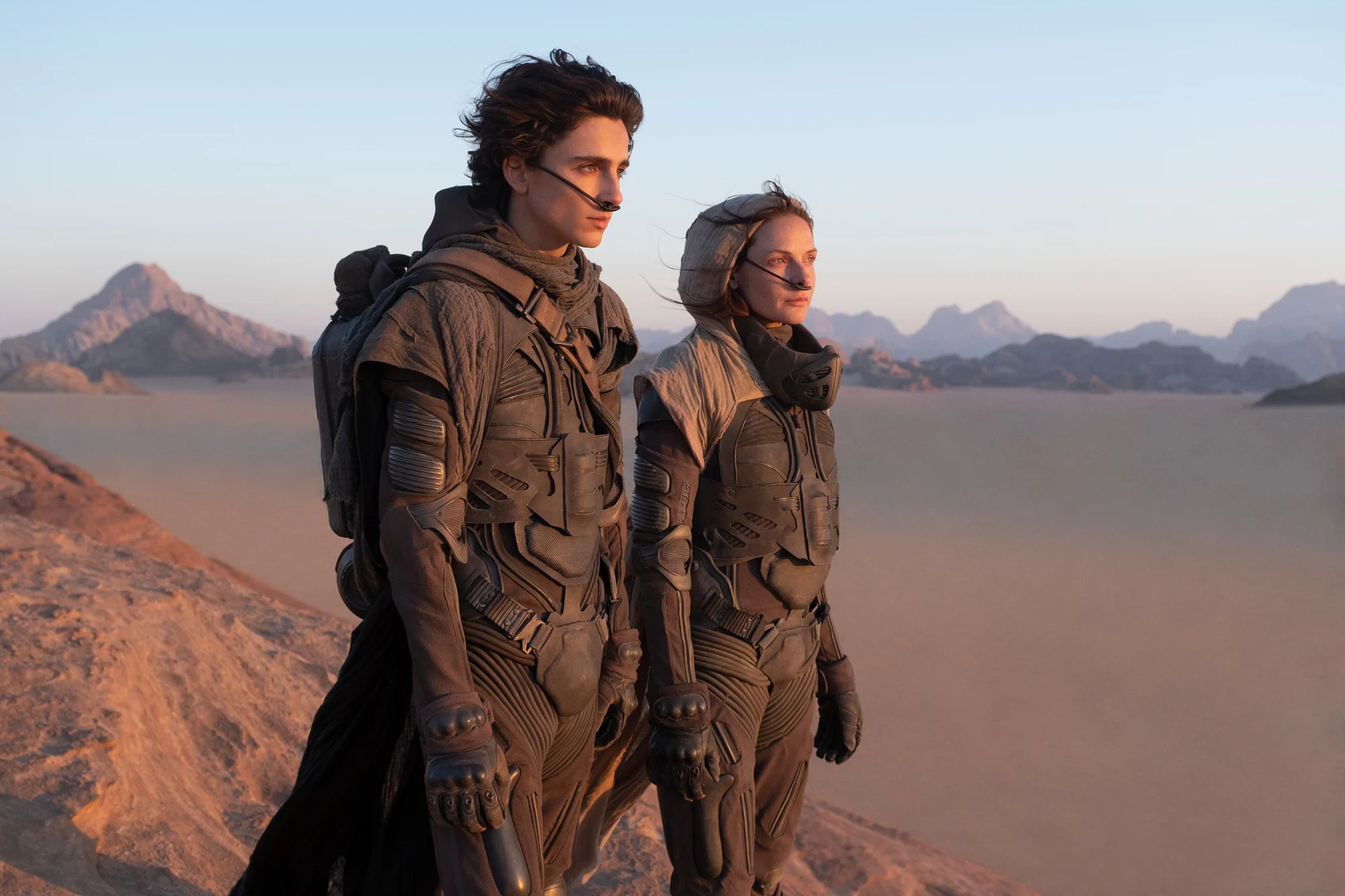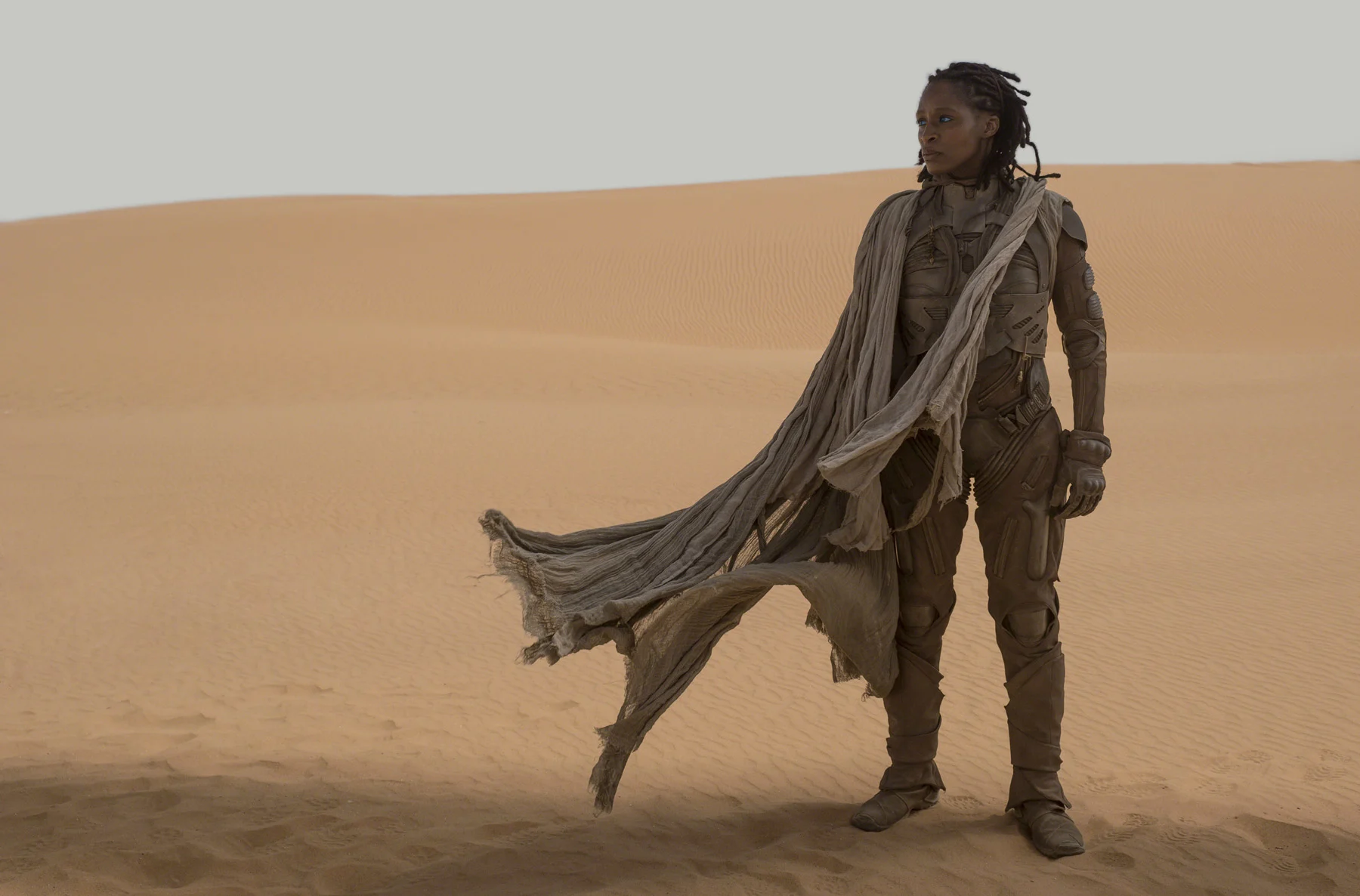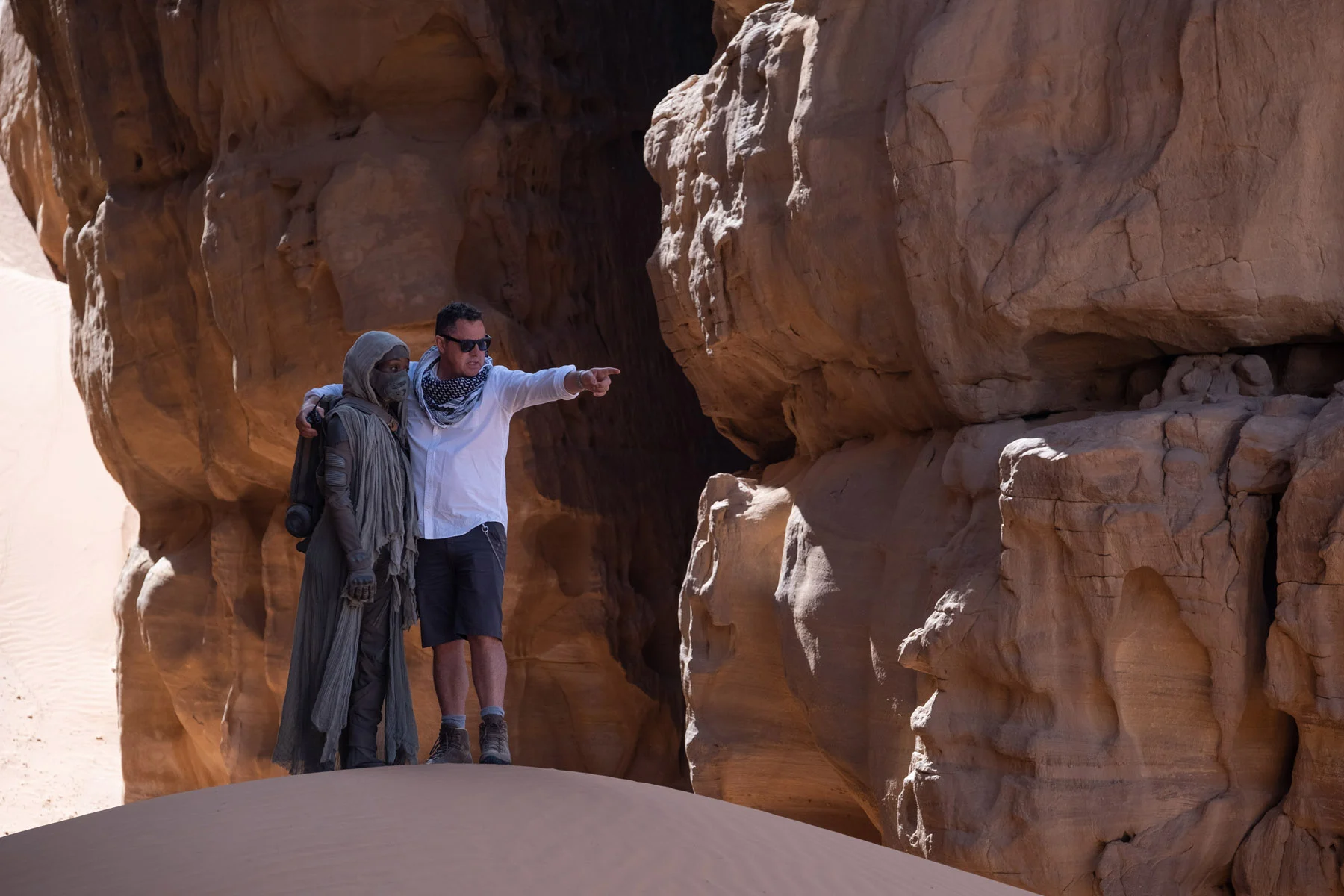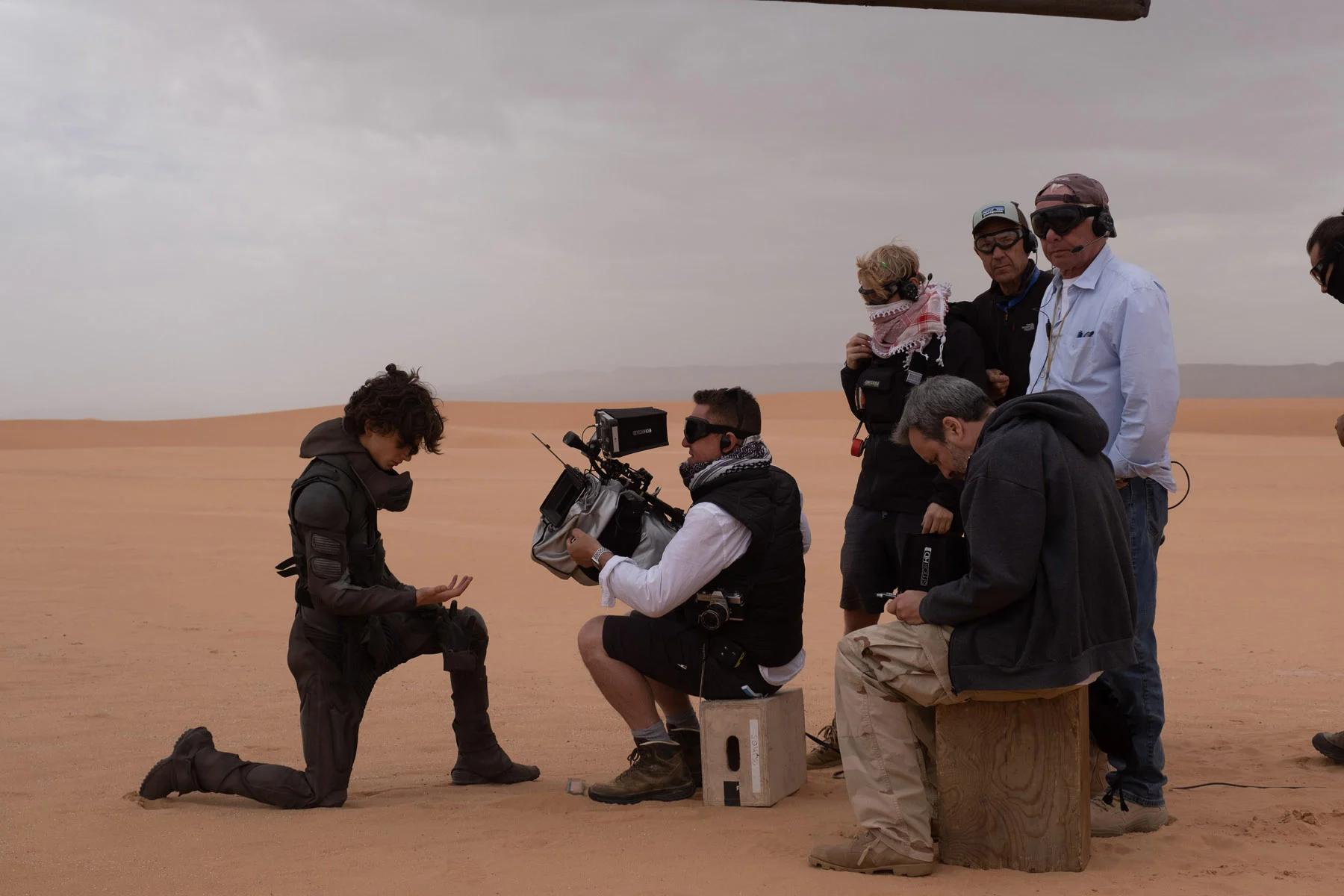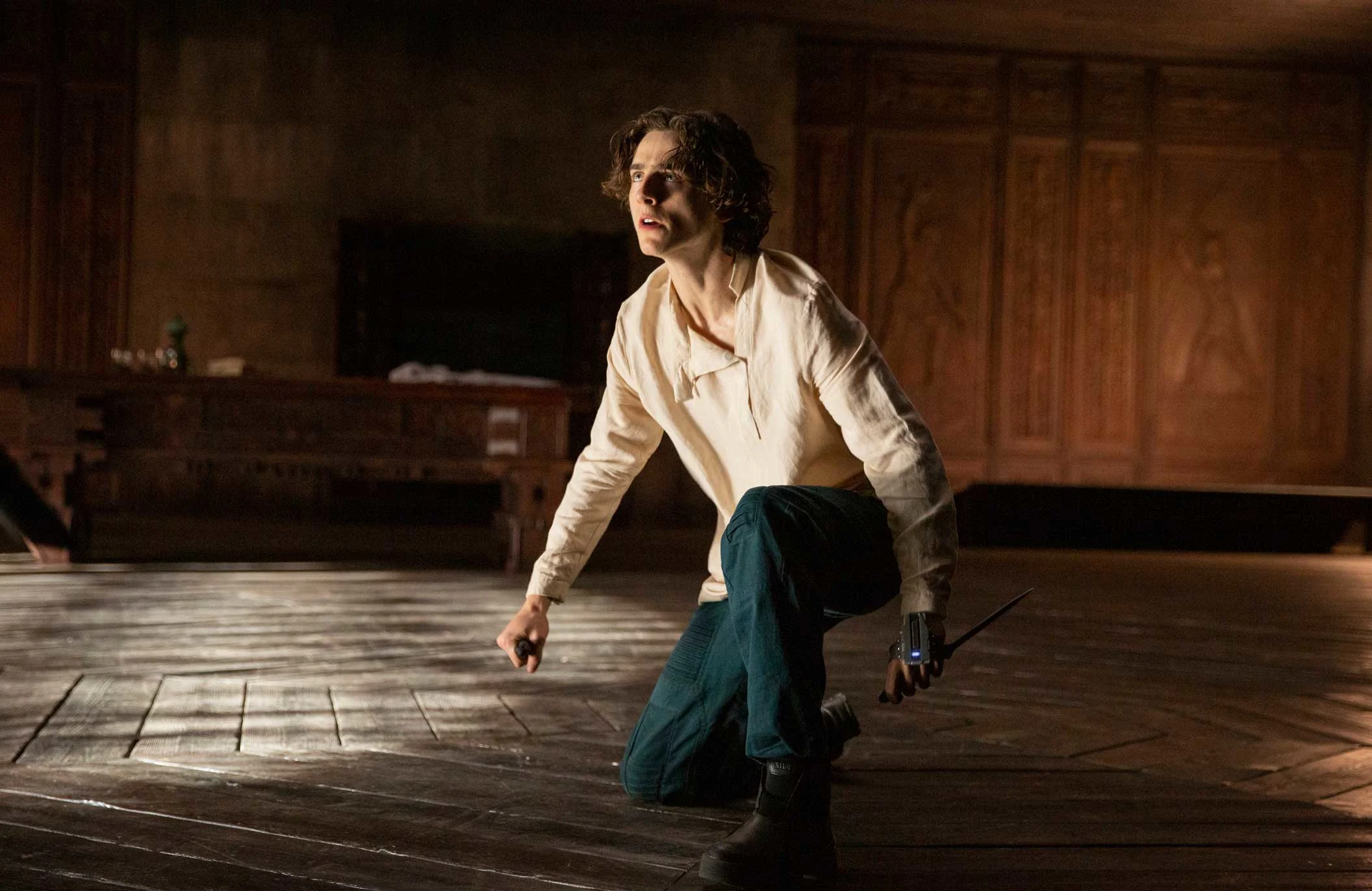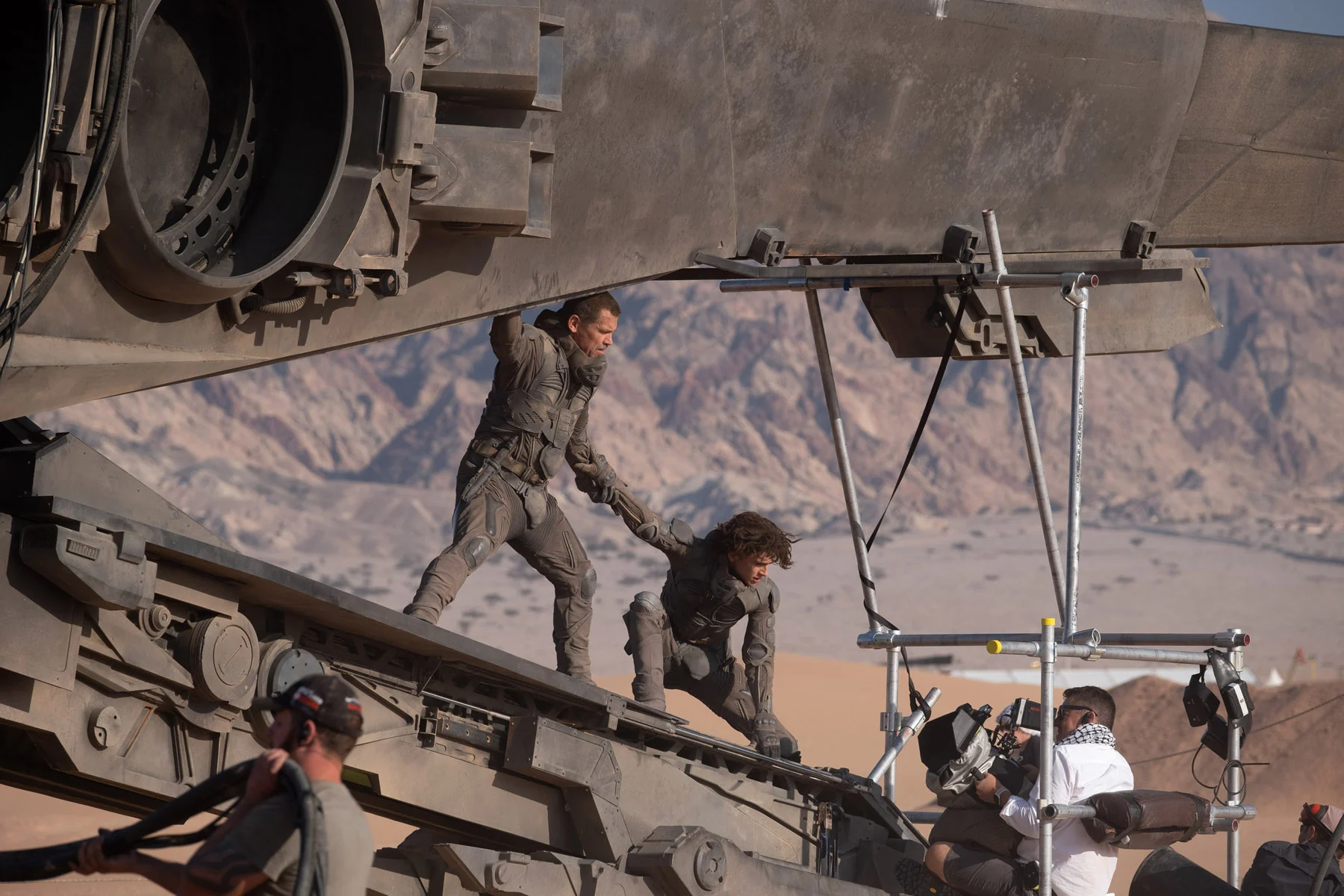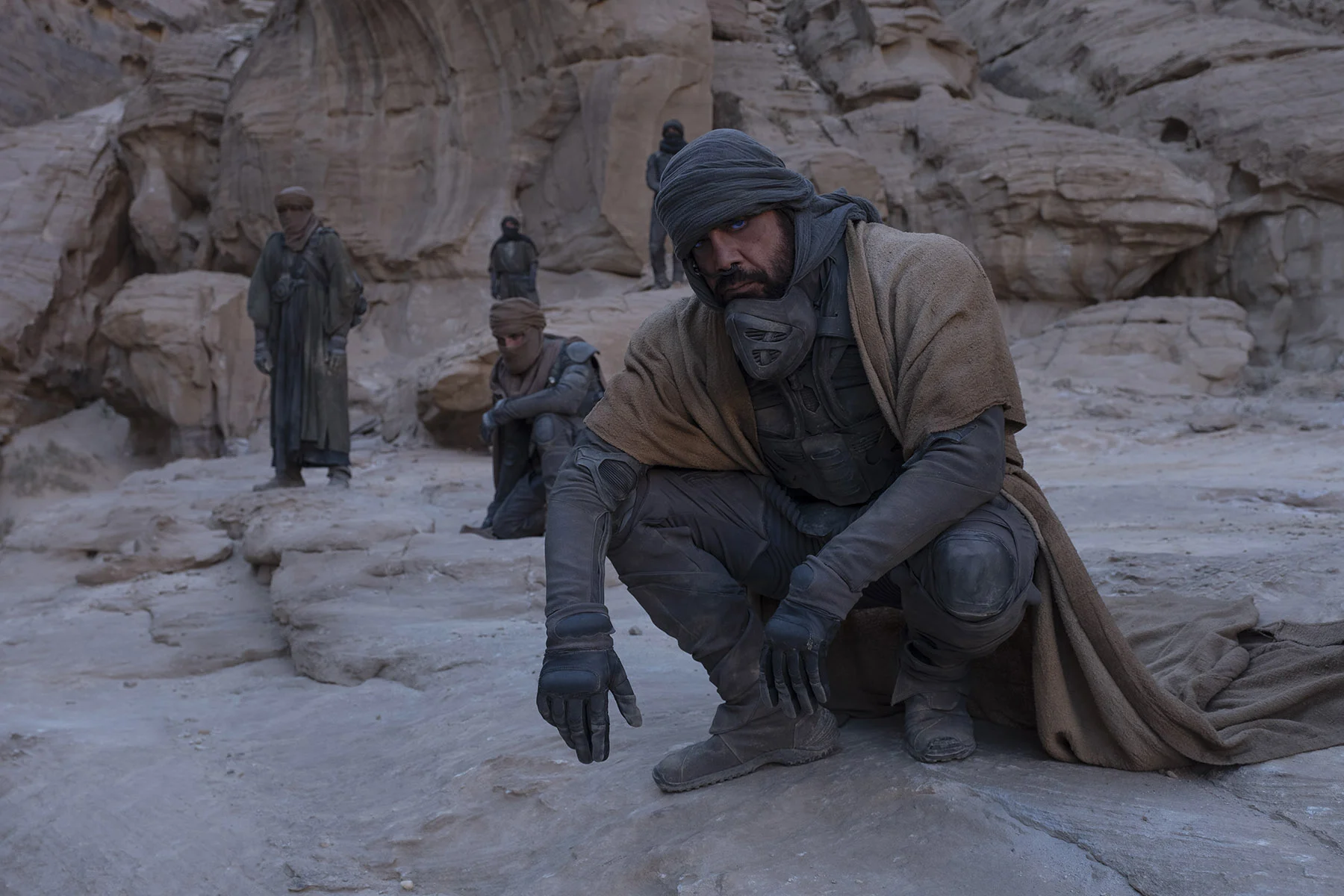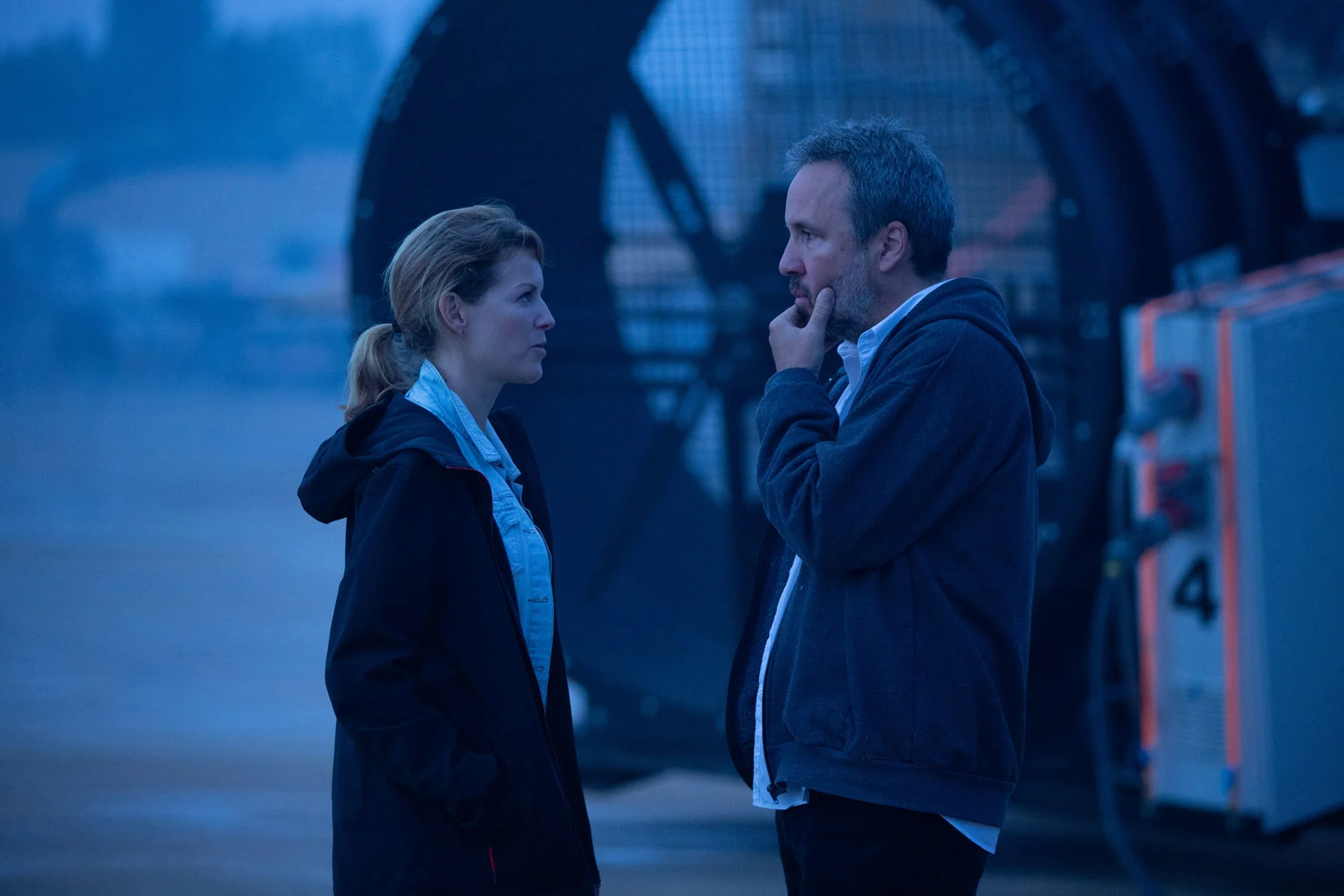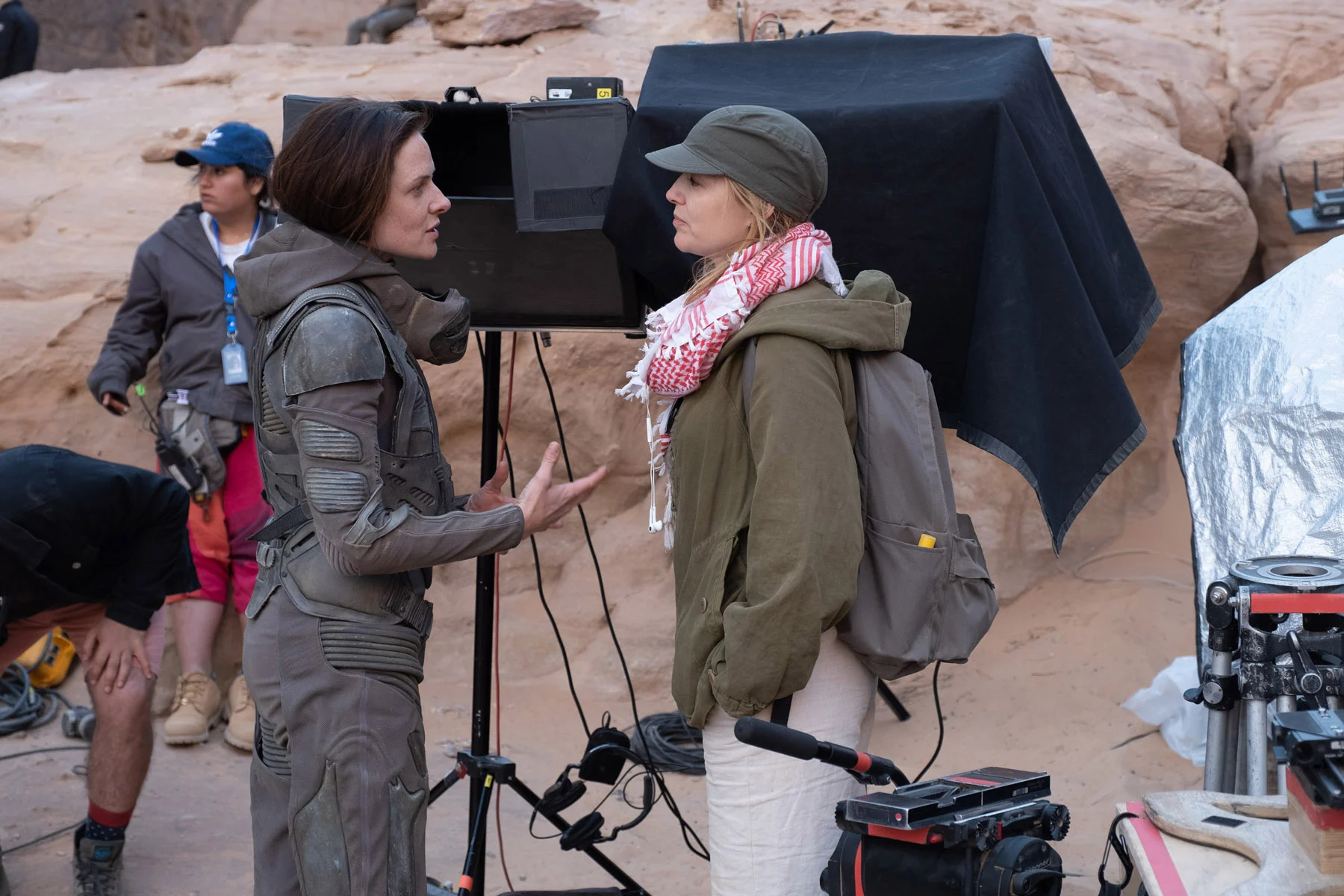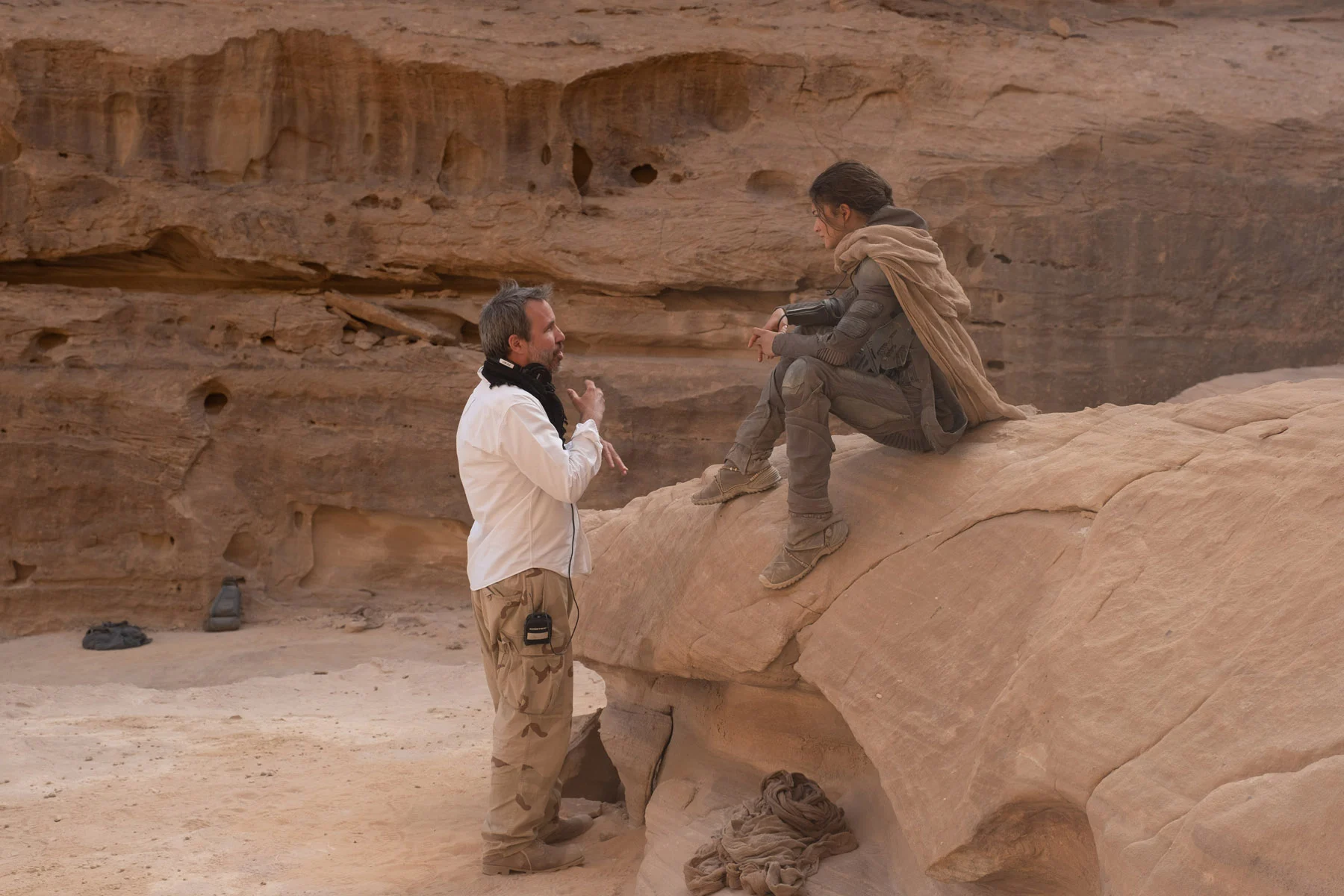
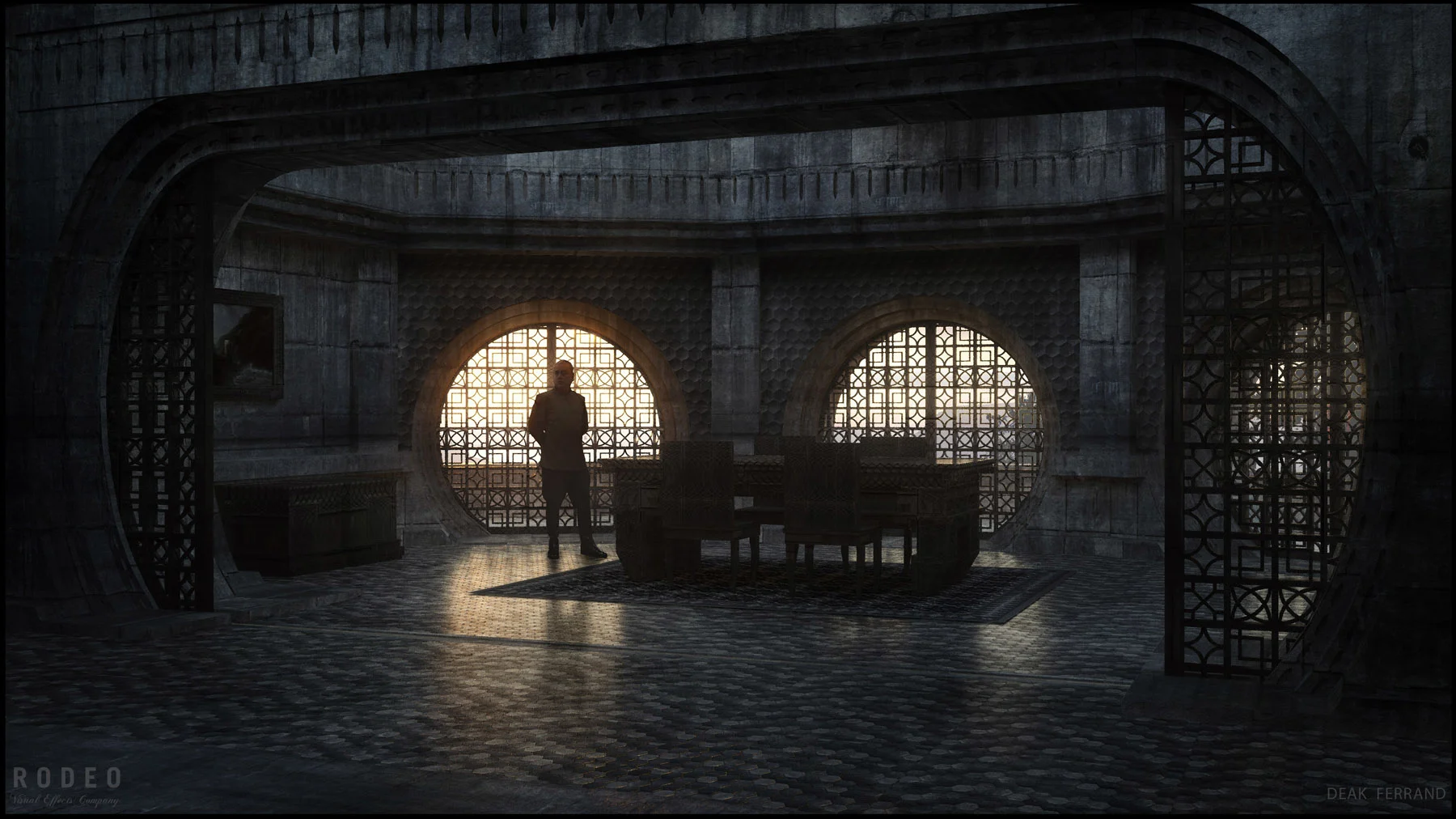
In October 2021, Denis Villeneuve’s cinematic take on Frank Herbert’s iconic 1965 science-fiction novel Dune will be revealed to the world. Accompanying this titanic release is an in-depth, behind the scenes book detailing its creation, by Tanya Lapointe, the film’s executive producer. Here Debbie Zhou speaks to Tanya about how the team pulled off what looks to be one of the most phenomenal Hollywood blockbusters in recent years.
When Executive Producer Tanya Lapointe first walked onto the set of Dune, she was transported by the epic scale of the otherworldly escape being built right in front of her eyes. “We were all pinching ourselves, we were kids again,” she says. “I remember [actor] Steven McKinley Henderson coming onto one of those finished sets, and he said, ‘It feels like walking into a pyramid.’ I think that was the greatest image, because it was regal. It was larger than life.”
Over the last five years, Tanya and her close collaborator and partner, Quebec-born film director Denis Villeneuve – the Academy Award-nominated filmmaker behind visually spectacular and atmospheric films like Sicario, Arrival and Blade Runner 2049 – have embarked on a mammoth filmmaking journey to adapt Frank Herbert’s iconic 1965 science-fiction novel for the big screen.
In mounting a production of this sweeping size and scale, Tanya tapped into what she describes as her “investigative and creative” eye as a cultural journalist and documentary filmmaker to curate and write a publication that will serve as an official companion piece to the film, titled The Art and Soul of Dune. With interviews and intricate details around the film’s concepts and designs, it offers an exclusive look into the behind-the-scenes magic needed to bring to life the sublime magnitude of Herbert’s seminal interstellar universe.
Now, it will mark a full circle moment for Tanya Lapointe and Denis Villeneuve, as the film staged its world premiere at this year's Venice Film Festival, after its initial theatrical release in November 2020 was delayed by COVID-19.
“The Venice Film Festival is where Denis [Villeneuve] once told a reporter that it would be his dream project,” Tanya recounts, speaking to me over Zoom from her home in Montreal. “That made the headlines in the trade papers, and the news got to Mary Parent and Cale Boyter at Legendary Entertainment, who had just gotten the rights.”

Starring a league of big-star names like Timothée Chalamet, Rebecca Ferguson, Jason Momoa, Oscar Isaac and Zendaya, Dune is set in the distant future where humanity lives in a feudal galactic empire. Timothée Chalamet plays young Paul Atreides, whose family, House Atreides, accept stewardship of Planet Arrakis – a desert wasteland that sources “spice,” a rare, mind-expanding natural resource upon which space travel, knowledge, commerce and human existence all rely. What unfolds is a battle for power amidst betrayals and tragic violence. Frank Herbert’s ideas around environmentalism and the potential of humanity for change are still thematic undercurrents relevant for a 21st century audience.
Frank Herbert’s novel of the same name (and the first installment of five subsequent sequels) has long had a complex history of film and TV adaptations.

But for Denis, the film was a perfect fit: it signified a project that had already begun cultivating in his mind as young as a teenager, which has since turned from mere pipedream to reality. The actual fruition of those dreams on paper started in the summer of 2017. “Denis started working with [writer] Eric Roth – and later writer John Spaihts – going back to Frank Herbert’s book and diving in, fleshing it out and deciding how they would tell the story,” Tanya explains. “Even in those early stages, Sam Hudecki, who is a trusted collaborator, started working with Denis on the storyboards and concept art, deciding, for example, just what an ornithopter looked like.”
Tanya recalls it prompted questions like, “Does it look like a bee? Does it look like a bird? Is it a cross between the two?” Eventually, the design of the Dune universe’s most common transport vessels became a “dragonfly.” Their production designer, Patrice Vermette, later worked with BGI Supplies in London, building it to the life-size measurements of a helicopter. “You have to make something that will be able to be built, be logical and have the right cinematic essence to translate the emotion,” she says.
The innovative world-building exercise came down to “instinct,” and carried across into the early development stage, where Denis Villeneuve worked with a small team of artists, many of whom he had worked with before on his earlier films.
This included Tanya, whose role saw her work together with the other producers on the ground for the five month shoot. At times, this meant supervising the second unit, and at every stage, ensuring that Denis’ vision was brought to life, from development all the way through to post-production.



Communication with the different departments, she believes, was key to making the production align. “The fact that I work so closely with Denis gives me access to him and to information that then needs to be shared with other people,” she reveals.
Tanya smiles when describing herself as the “guardian of Denis’ vision,” though sheepishly comments that she doesn’t want to “give herself too much credit.” “From Blade Runner 2049, I quickly understood how I could be a part of the process – because [Denis] knew he could trust me,” she says. “So it was just ushering everything in the right direction. There are so many moving pieces, it’s like spinning plates, and always keeping track of everything going on. I love that.”
Rising up to meet the high-pressure studio demands could be crushingly overwhelming – but for Tanya, it felt like a “natural and healthy” progression for both herself and Denis. Denis has spoken candidly in the past about how Blade Runner 2049 and Arrival prepared him for the enormous ambition associated with a project like Dune.
Tanya felt those experiences – such as the confidence of working with visual effects and building up the right technical expertise – ensured Dune became a “culmination of the scope, the entertainment [and] the emotion.”
However, unlike Denis’ other ambitious projects, Dune officially marked a step into uncharted territory, due to every element of the film requiring invention from scratch. Discovering and shooting in new places became part of this journey, and with that, the logistical trials of filming with an 800-person crew, across over 45 sets and locations, spanning four countries: Jordan, Hungary, the UAE and Norway.
Tanya describes the conditions braved by the cast and production crew as a “surreal experience” – from being sandblasted in the middle of Jordan’s pristine Military Dunes, to waking up in the middle of the night to shoot in Abu Dhabi’s scorching desert.
“We wore scarves to protect ourselves from the sun, and we had goggles because we were in the middle of sandstorms,” she explains, referring to the base camp built in the Wadi Rum desert, where they set up “mobile towns” to feed people and keep everyone cool.
The Dune universe was such a multinational “carousel,” Tanya tells me, that one of the biggest challenges was physically finding enough space to construct all the sets: “Sometimes we would finish shooting on one set, tear that down, and go to another one, while [the crew] would build another set. So, it was just like a domino effect.”
It’s the cumulative effect of Dune’s grand achievements, which Tanya speaks to with such enthusiasm, that led her to documenting the creative journey of the film. Offering “Easter eggs” for readers to understand the finer details of the filmmaking process, it’s set to be so epic that film composer Hans Zimmer has written a dedicated second original score for Tanya’s making-of book in addition to scoring Villeneuve’s film.

“It is such a privilege to have been on these projects, and to highlight the expertise of the people who we’re working with,” she explains. “They’re true artists and poets and it’s important to celebrate what they bring to projects.”
While Tanya wrote and curated a similar collection for Blade Runner 2049, The Art and Soul of Blade Runner 2049 (which included an additional sister volume, Blade Runner 2049: Interlinked – the Art), this time the creation of this 239-page book was decided at the beginning of post-production. It opened up the opportunity for Tanya to “stop and reflect” on the inner thought processes of Dune’s film creatives, such as Jacqueline West’s rationale behind her costume designs. Namely, a conversation sparked between the two of them around Reverend Mother Mohiam (played by Charlotte Rampling), a high-ranking member of the Bene Gesserit Sisterhood – an ancient female organization existing to serve the empire with their mystic talents – and her head garment, which resembled a “chess piece.”
Tanya recalls, “When I spoke to her for the book, [Jacqueline] said, ‘I really did look at chess pieces from the Renaissance, and I also found inspiration in Tarot cards.’ Because she knew that Frank Herbert loved to play chess, and loved Tarot.” Being given free rein to curate from the wide selection of concept art available, it allowed her and fellow costume designer Bob Morgan to “dive into everything and pick out the best images that would best tell the story.”
“Can I show you another thing?” Tanya asks me, as she excitedly flips through the pages, stopping to show me certain sections of the book through the screen. Among these are Patrice Vermette’s set design for the Castle Caladan, which is based on beehives’ honeycomb patterns (“it’s very subtle, but it’s present throughout”), and the Baron’s full prosthetics, which came about after months of sculpting the costume on a life-size mould. “There is so much serendipity and many wonderful stories, and that's why I can't stop talking,” she says, laughing.
While Tanya remains tight-lipped around any news surrounding Dune’s second installment (this film covers roughly the first half of the novel), she is excited to see Dune – which was Denis’ first film shot for IMAX – earning a long-awaited and fought-for big-screen event treatment.
“Every time I’ve seen [Dune], I get this feeling of exhilaration and I hope audiences feel the same way,” she says. “I think that feeling can only be stronger for sharing it, because there’s something about being with other people that accentuates those feelings. I’ve missed the communal experience, and I really hope that we can all go back to it safely.”



